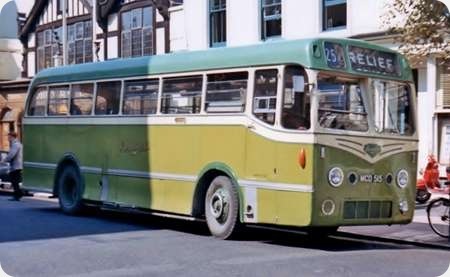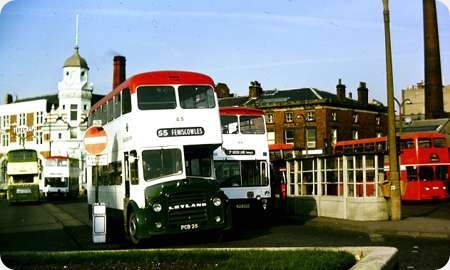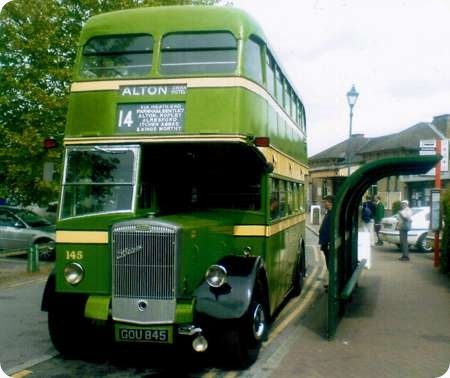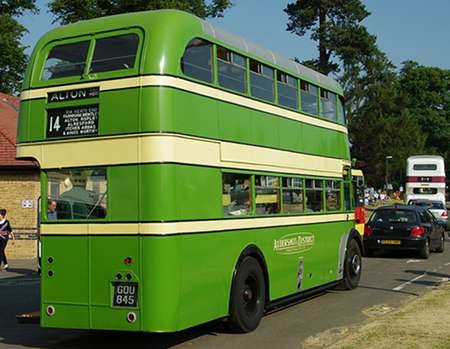Southdown – Leyland Royal Tiger – MCD 515 – 1515
Southdown Motor Services Ltd
1953
Leyland Royal Tiger PSU1/13
East Lancs DP40C
This photo taken in the mid sixties in Pevensey Road Eastbourne shows one of my all time favourites, one of batch of thirty No’s 1510-1539 Reg No’s MCD 510-539 delivered in 1953 it is a Leyland Royal Tiger PSU1/13 with an East Lancs body delivered as DP40C and converted to B39F for OMO use in 1961 then sold in 1968. These followed a batch of ten No’s 1500-1509 Reg No’s LUF 500-509 delivered in 1952 these differed in being delivered as B40R also converted later for OMO work. My best memories of these handsome buses were in the mid fifties on the 126 route from Eastbourne to Seaford by the inland route via Alfriston and a steep climb over the South Down known as High and Over, the pleasure was much greater if I was able to bag the front N/S seat opposite the driver for which I always arrived early, the usual two cars (to use correct Southdown term) were 1528 and 1531. I little thought that about 14 years later I would be driving Leopards on the virtually same route but always wished it was one of those Royal Tigers.
Photograph and Copy contributed by Diesel Dave
21/05/15 – 06:45
Very nice, Dave, but wasn’t B39C a bit difficult for OMO/OPO working?
Pete Davies
21/05/15 – 06:47
Does anyone know what caused Southdown to buy East Lancs bodywork, a very accurate attractive bus but at the time East Lancs customer base was mainly in the north.
Did Southdown really use these as B39C for OMO work?
Chris Hough
21/05/15 – 16:56
There is a typo in Dave’s text. Should read’ and converted to B39F I also remember travelling on these as a child, both before and after conversion, and like Dave used to go for the front seat when they were central entrance. They were replaced in 1968 with a batch of Marshall bodied manual gearbox RE’s, which I seem to remember were not to their drivers liking!
Roy Nicholson
21/05/15 – 16:58
Spot the not so deliberate mistake 1515 was of course converted to B39F for OMO/OPO work part of the conversion entailed the previously recessed N/S windscreen being made upright to accommodate the new doors when open, my apologies for my poor proof reading.
Diesel Dave
23/05/15 – 07:20
Chris Hough asks about Southdown’s use of East Lancs products – I think the first use was in the war-time rebodying of two Leyland TD1s, and eight Leyland TD2’s to utility specification, a job which East Lancs was authorised (with Willowbrook) to do, rather than body new chassis. Southdown must have been satisfied, because East Lancs was included in the re-bodying programme of Leyland TD3s, TD4s and TD5s just after WWII. This exercise included several body-builders, including Park Royal, NCME, Saunders and Beadle. 59 bodies were completed by East Lancs between 1946 and 1950. Then the 40 Royal Tigers followed, and the final 24 PD2/12’s (789-812). However Southdown multi-sourced by also ordering from Park Royal, Beadle and NCME for double-deckers in the 1950s, finally settling on NCME for the 285 Queen Mary PD3s.
Michael Hampton
Quick links to the - Comments Page - Contact Page - Home Page




